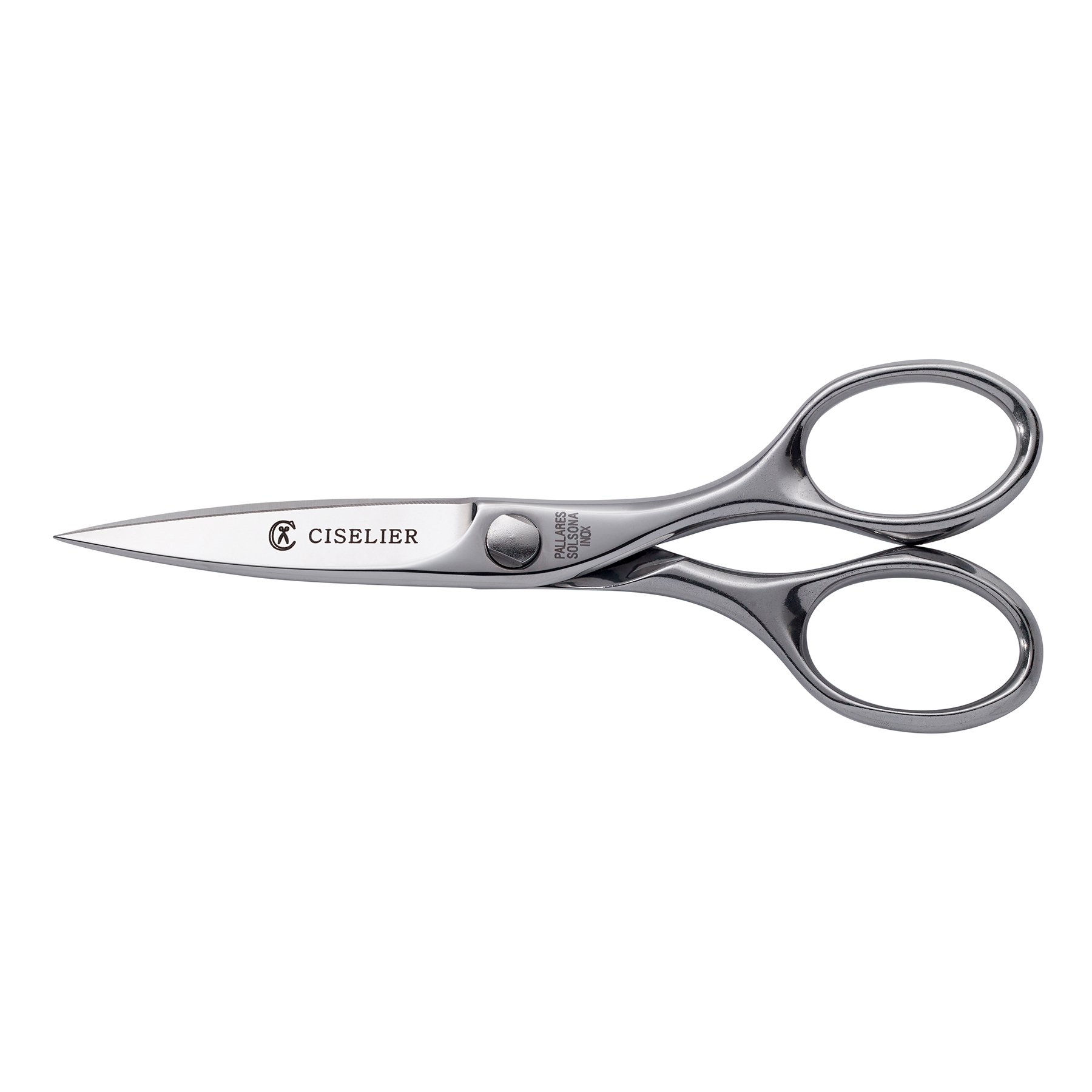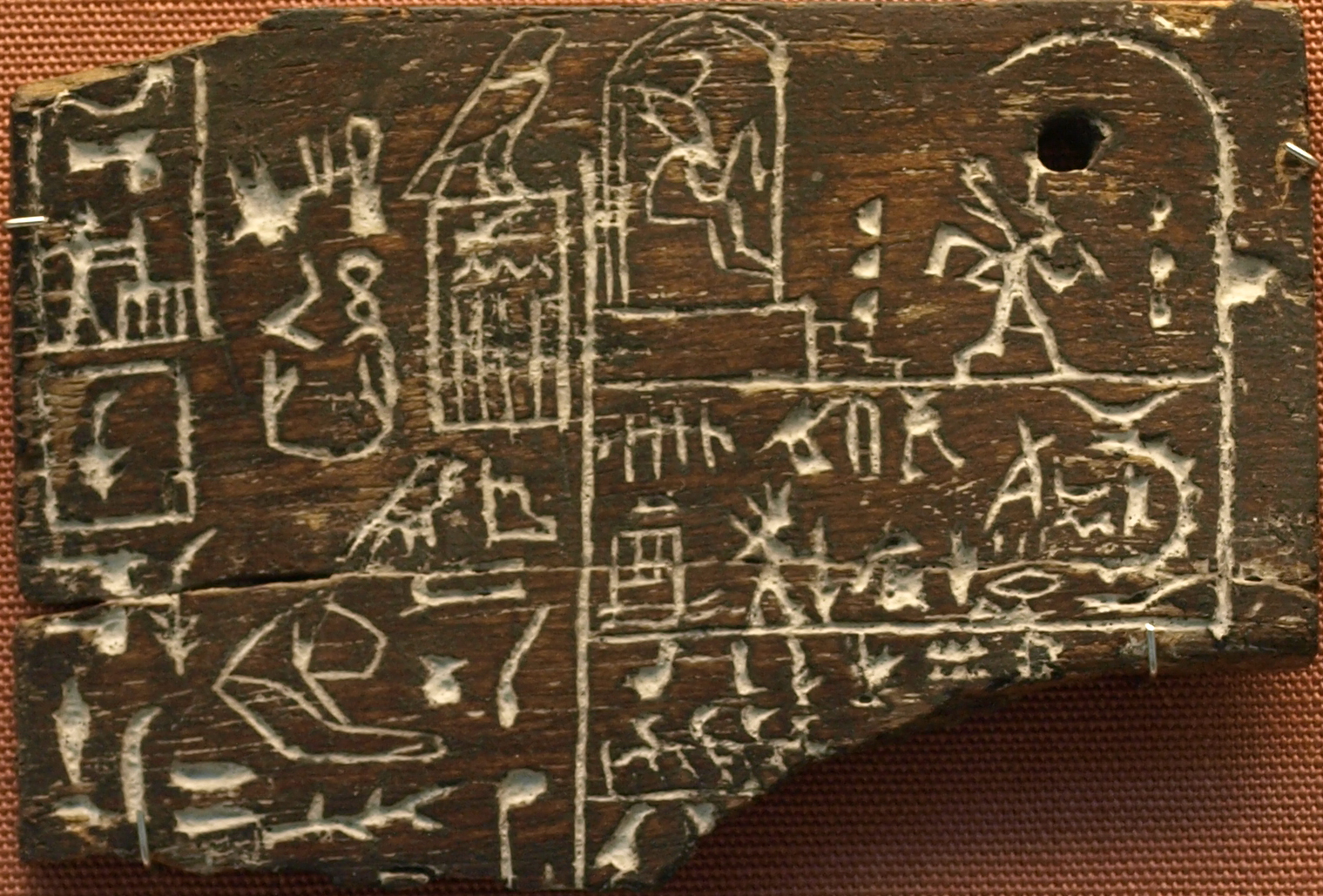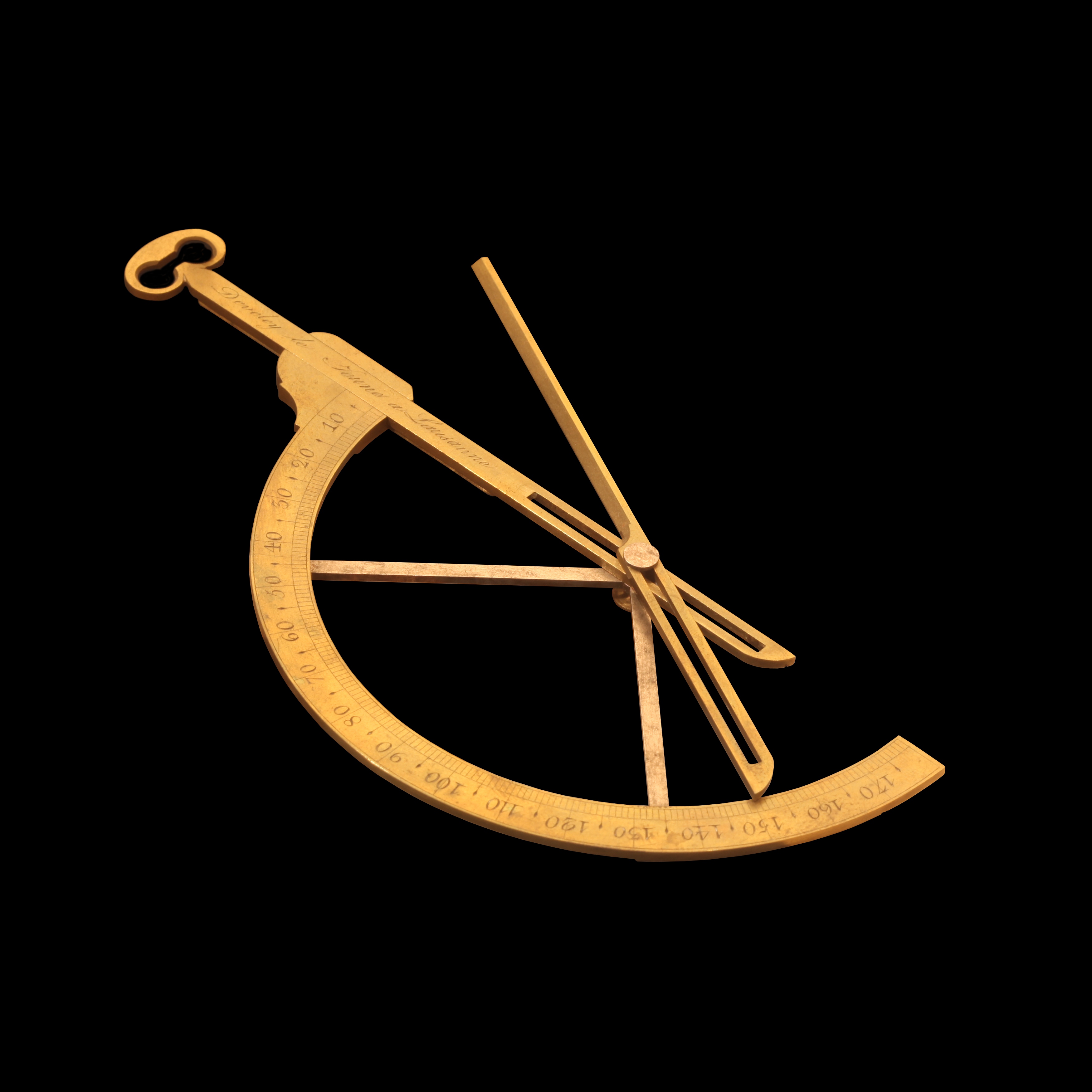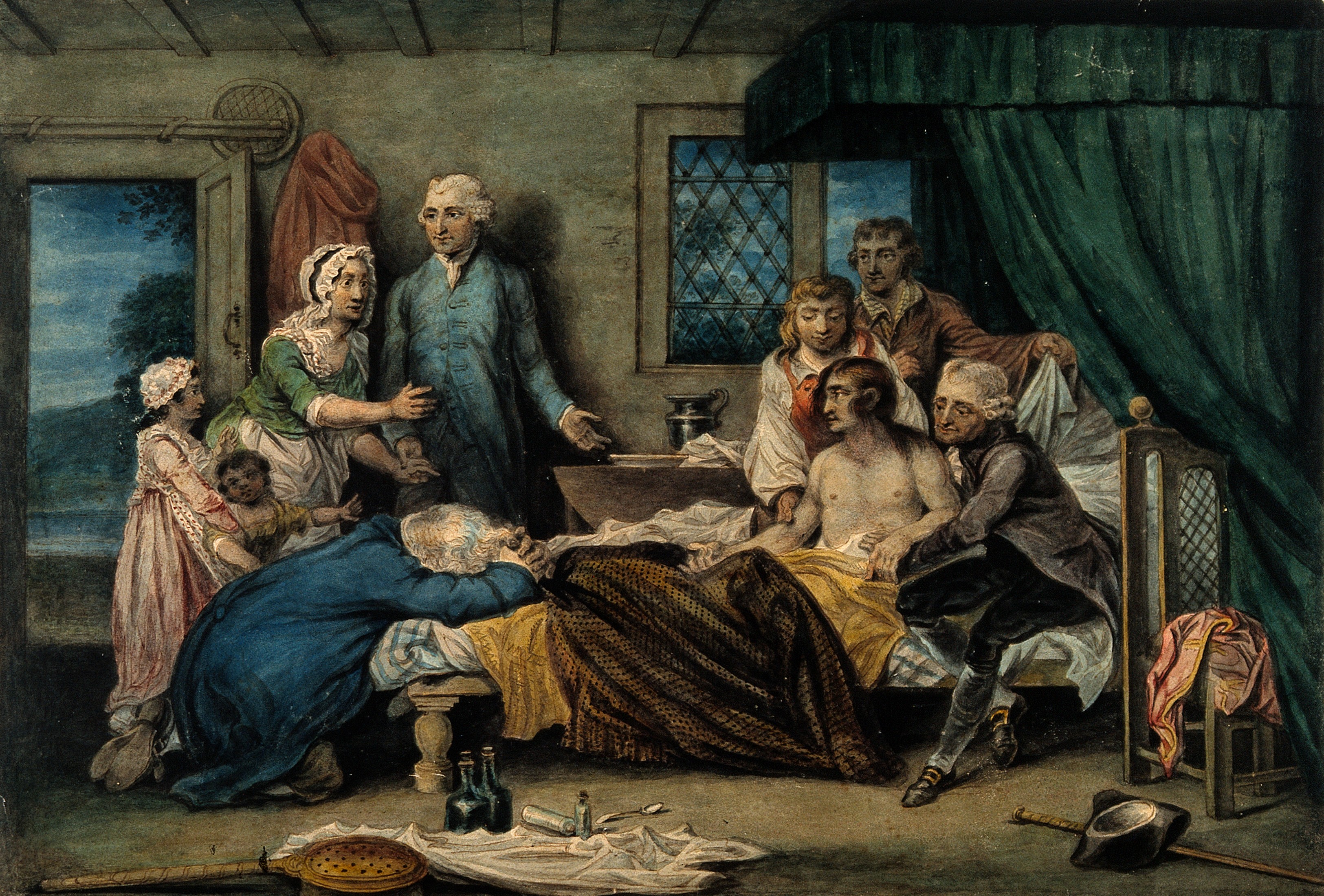|
Parallel Rulers
Parallel rulers are a Technical drawing, drafting instrument used by navigators to draw parallel lines on charts. The tool consists of two straight edges joined by two arms which allow them to move closer or further away while always remaining parallel to each other. History The parallel ruler was invented at about 1584 by Fabrizio Mordente, as well as by Taqi ad-Din Muhammad ibn Ma'ruf, Taqi al-Din who died in 1585. However it was not in common use (at least in Europe) until the 18th century. In the 19th century a retired sea captain, Captain William Andrew Field improved the design by adding a protractor-style scale to the upper edge of one rule, and compass points to the opposing edge, which made reading bearings easier. Examples exist of buxus, boxwood, ivory or ebony, usually with brass hinges. The instrument usually had two links, but longer models sometimes had three, and sometimes the links were scissors, scissored. Another variation is the "roller" model which included ... [...More Info...] [...Related Items...] OR: [Wikipedia] [Google] [Baidu] |
Buxus
''Buxus'' is a genus of about seventy species in the family Buxaceae. Common names include box and boxwood. The boxes are native to western and southern Europe, southwest, southern and eastern Asia, Africa, Madagascar, northernmost South America, Central America, Mexico and the Caribbean, with the majority of species being tropical or subtropical; only the European and some Asian species are frost-tolerant. Centres of diversity occur in Cuba (about 30 species), China (17 species) and Madagascar (9 species). They are slow-growing evergreen shrubs and small trees, growing to 2–12 m (rarely 15 m) tall. The leaves are opposite, rounded to lanceolate, and leathery; they are small in most species, typically 1.5–5 cm long and 0.3–2.5 cm broad, but up to 11 cm long and 5 cm broad in ''B. macrocarpa''. The flowers are small and yellow-green, monoecious with both sexes present on a plant. The fruit is a small capsule 0.5–1.5 cm long (to 3 ... [...More Info...] [...Related Items...] OR: [Wikipedia] [Google] [Baidu] |
Technical Drawing Tools
Drafting tools may be used for measurement and layout of drawings, or to improve the consistency and speed of creation of standard drawing elements. Tools such as pens and pencils mark the drawing medium. Other tools such as straight edges, assist the operator in drawing straight lines, or assist the operator in drawing complicated shapes repeatedly. Various scales and the protractor are used to measure the lengths of lines and angles, allowing accurate scale drawing to be carried out. The compass is used to draw arcs and circles. A drawing board was used to hold the drawing media in place; later boards included drafting machines that sped the layout of straight lines and angles. Tools such as templates and lettering guides assisted in the drawing of repetitive elements such as circles, ellipses, schematic symbols and text. Other auxiliary tools were used for special drawing purposes or for functions related to the preparation and revision of drawings. The tools used for manual ... [...More Info...] [...Related Items...] OR: [Wikipedia] [Google] [Baidu] |
Cras Protractor
Jean Émile Paul Cras (; 22 May 1879 – 14 September 1932) was a 20th-century French composer and career naval officer. His musical compositions were inspired by his native Brittany, his travels to Africa, and most of all, by his sea voyages. As a naval commander he served with distinction in the Adriatic Campaign during World War I. Biography Life and naval career Cras was born and died in Brest. His father was naval medical officer. He was accepted into the navy at the age of seventeen. As a midshipman cadet on the ''Iphigénie'', he travelled in the Americas, the West Indies and Senegal. He was promoted to Lieutenant in 1908. His mathematical skills led to his proposing a number of innovations in technical practices which were adopted by the navy, including his invention of an electrical selector and a navigational plotter protractor known as (aka Cras ruler, Cras protractor, Cras plotter).Michel Fleury, "Jean Cras, an exceptional destiny", ''Polyphème'', Tim ... [...More Info...] [...Related Items...] OR: [Wikipedia] [Google] [Baidu] |
Scissors
Scissors are hand-operated shearing tools. A pair of scissors consists of a pair of blades pivoted so that the sharpened edges slide against each other when the handles (bows) opposite to the pivot are closed. Scissors are used for cutting various thin materials, such as paper, paperboard, cardboard, metal leaf, metal foil, cloth, rope, and wire. A large variety of scissors and shears all exist for specialized purposes. Hair-cutting shears and kitchen shears are functionally equivalent to scissors, but the larger implements tend to be called Shears (other)#Cutting devices, shears. Hair-cutting shears have specific blade angles ideal for cutting hair. Using the incorrect type of scissors to cut hair will result in increased damage or split ends, or both, by breaking the hair. Kitchen shears, also known as kitchen scissors, are intended for cutting and trimming foods such as meats. Inexpensive, mass-produced modern scissors are often designed ergonomically with composite ... [...More Info...] [...Related Items...] OR: [Wikipedia] [Google] [Baidu] |
Brass
Brass is an alloy of copper and zinc, in proportions which can be varied to achieve different colours and mechanical, electrical, acoustic and chemical properties, but copper typically has the larger proportion, generally copper and zinc. In use since prehistoric times, it is a substitutional alloy: atoms of the two constituents may replace each other within the same crystal structure. Brass is similar to bronze, a copper alloy that contains tin instead of zinc. Both bronze and brass may include small proportions of a range of other Chemical element, elements including arsenic, lead, phosphorus, aluminium, manganese and silicon. Historically, the distinction between the two alloys has been less consistent and clear, and increasingly museums use the more general term "list of copper alloys, copper alloy". Brass has long been a popular material for its bright gold-like appearance and is still used for drawer pulls and door handle, doorknobs. It has also been widely used to ma ... [...More Info...] [...Related Items...] OR: [Wikipedia] [Google] [Baidu] |
Ebony
Ebony is a dense black/brown hardwood, coming from several species in the genus '' Diospyros'', which also includes the persimmon tree. A few ''Diospyros'' species, such as macassar and mun ebony, are dense enough to sink in water. Ebony is finely textured and has a mirror finish when polished, making it valuable as an ornamental wood. It is often cited as one of the most expensive woods in the world. Etymology The word ''ebony'' comes from the Ancient Egyptian ', through the Ancient Greek ('), into Latin () and Middle English. Species Species of ebony include '' Diospyros ebenum'' (Ceylon ebony), native to southern India and Sri Lanka; '' D. crassiflora'' (Gabon ebony), native to western Africa; '' D. humilis'' (Queensland ebony), native to Queensland, the Northern Territory, New Guinea and Timor; and '' D. celebica'' (Sulawesi ebony), native to Indonesia and prized for its luxuriant, multi-colored wood grain. Mauritius ebony, '' D. tessellaria'', was largely exploited by ... [...More Info...] [...Related Items...] OR: [Wikipedia] [Google] [Baidu] |
Ivory
Ivory is a hard, white material from the tusks (traditionally from elephants) and Tooth, teeth of animals, that consists mainly of dentine, one of the physical structures of teeth and tusks. The chemical structure of the teeth and tusks of mammals is the same, regardless of the species of origin, but ivory contains structures of mineralised collagen. The trade in certain teeth and tusks other than elephant is well established and widespread; therefore, "ivory" can correctly be used to describe any mammalian teeth or tusks of commercial interest which are large enough to be carved or scrimshawed. Besides natural ivory, ivory can also be produced synthetically, hence (unlike natural ivory) not requiring the retrieval of the material from animals. Tagua nuts can also be carved like ivory. The trade of finished goods of ivory products has its origins in the Indus Valley. Ivory is a main product that is seen in abundance and was used for trading in Harappan civilization. Finished iv ... [...More Info...] [...Related Items...] OR: [Wikipedia] [Google] [Baidu] |
Compass
A compass is a device that shows the cardinal directions used for navigation and geographic orientation. It commonly consists of a magnetized needle or other element, such as a compass card or compass rose, which can pivot to align itself with North magnetic pole, magnetic north. Other methods may be used, including gyroscopes, magnetometers, and GPS receivers. Compasses often show angles in degrees: north corresponds to 0°, and the angles increase clockwise, so east is 90°, south is 180°, and west is 270°. These numbers allow the compass to show azimuths or bearing (angle), bearings which are commonly stated in degrees. If local magnetic declination, variation between magnetic north and true north is known, then direction of magnetic north also gives direction of true north. Among the Four Great Inventions, the magnetic compass was first invented as a device for divination as early as the history of science and technology in China, Chinese Han dynasty (since c. 206 BC),#Li, ... [...More Info...] [...Related Items...] OR: [Wikipedia] [Google] [Baidu] |
Technical Drawing
Technical drawing, drafting or drawing, is the act and discipline of composing drawings that visually communicate how something functions or is constructed. Technical drawing is essential for communicating ideas in industry and engineering. To make the drawings easier to understand, people use familiar symbols, perspectives, units of measurement, notation systems, visual styles, and page layout. Together, such conventions constitute a visual language and help to ensure that the drawing is unambiguous and relatively easy to understand. Many of the symbols and principles of technical drawing are codified in an international standard called ISO 128. The need for precise communication in the preparation of a functional document distinguishes technical drawing from the expressive drawing of the visual arts. Artistic drawings are subjectively interpreted; their meanings are multiply determined. Technical drawings are understood to have one intended meaning. A draftsman is ... [...More Info...] [...Related Items...] OR: [Wikipedia] [Google] [Baidu] |
Protractor
A goniometer is an instrument that either measures an angle or allows an object to be rotated to a precise angular position. The term goniometry derives from two Greek words, γωνία (''gōnía'') 'angle' and μέτρον (''métron'') ' measure'. The protractor is a commonly used type in the fields of mechanics, engineering, and geometry. The first known description of a goniometer, based on the astrolabe, was by Gemma Frisius in 1538. Protractor A protractor is a measuring instrument, typically made of transparent plastic, for measuring angles. Some protractors are simple half-discs or full circles. More advanced protractors, such as the bevel protractor, have one or two swinging arms, which can be used to help measure the angle. Most protractors measure angles in degrees (°). Radian-scale protractors measure angles in radians. Most protractors are divided into 180 equal parts. Some precision protractors further divide degrees into arcminutes. A protractor divided ... [...More Info...] [...Related Items...] OR: [Wikipedia] [Google] [Baidu] |
Royal Humane Society
The Royal Humane Society is a British charity which promotes lifesaving intervention. It was founded in 1774 as the ''Society for the Recovery of Persons Apparently Drowned'', for the purpose of rendering first aid in cases of near drowning. History In 1773, physician William Hawes (physician), William Hawes (1736–1808) began publicising the power of artificial respiration and Tobacco smoke enema#Medical opinion, tobacco smoke enemas to resuscitate people who superficially appeared to have drowned. For a year he paid a reward out of his own pocket to any one bringing him a body rescued from the water within a reasonable time of immersion. Thomas Cogan, a fellow physician, who had become interested in the same subject during a stay at Amsterdam, where was instituted in 1767 a society for preservation of life from accidents in water, joined Hawes in his crusade. In the summer of 1774 Hawes and Cogan each brought fifteen friends to a meeting at the Chapter Coffee-house, Saint Pau ... [...More Info...] [...Related Items...] OR: [Wikipedia] [Google] [Baidu] |









